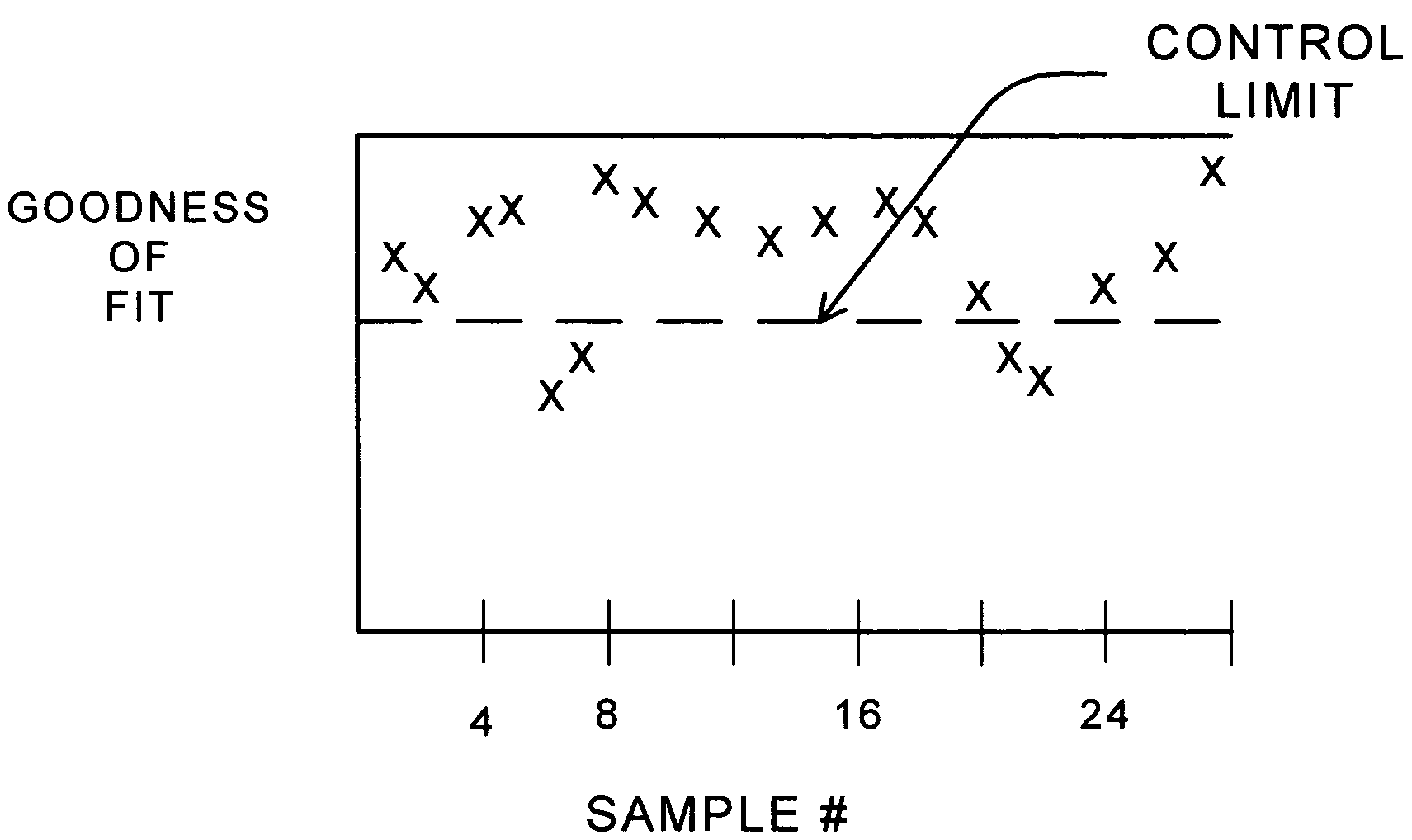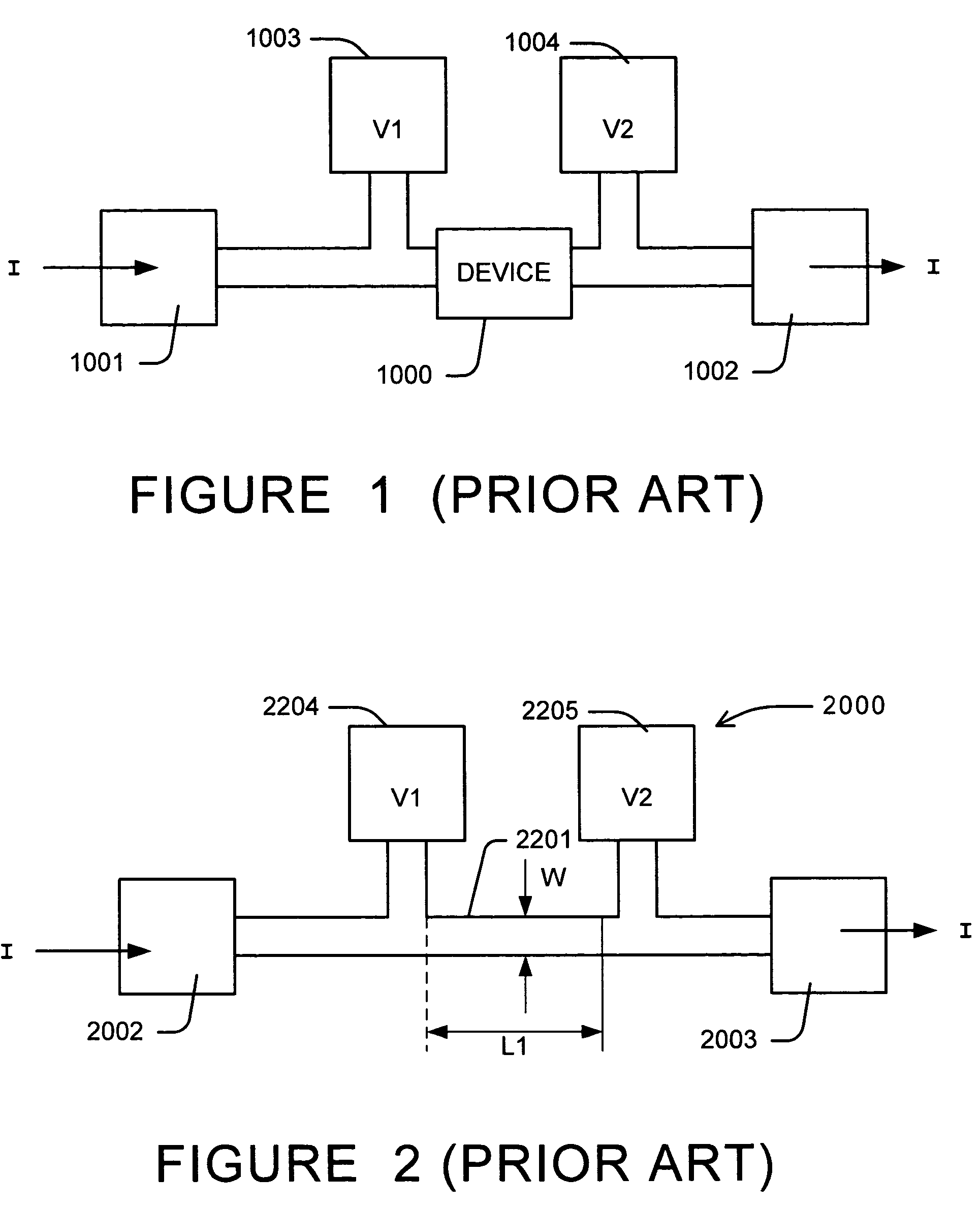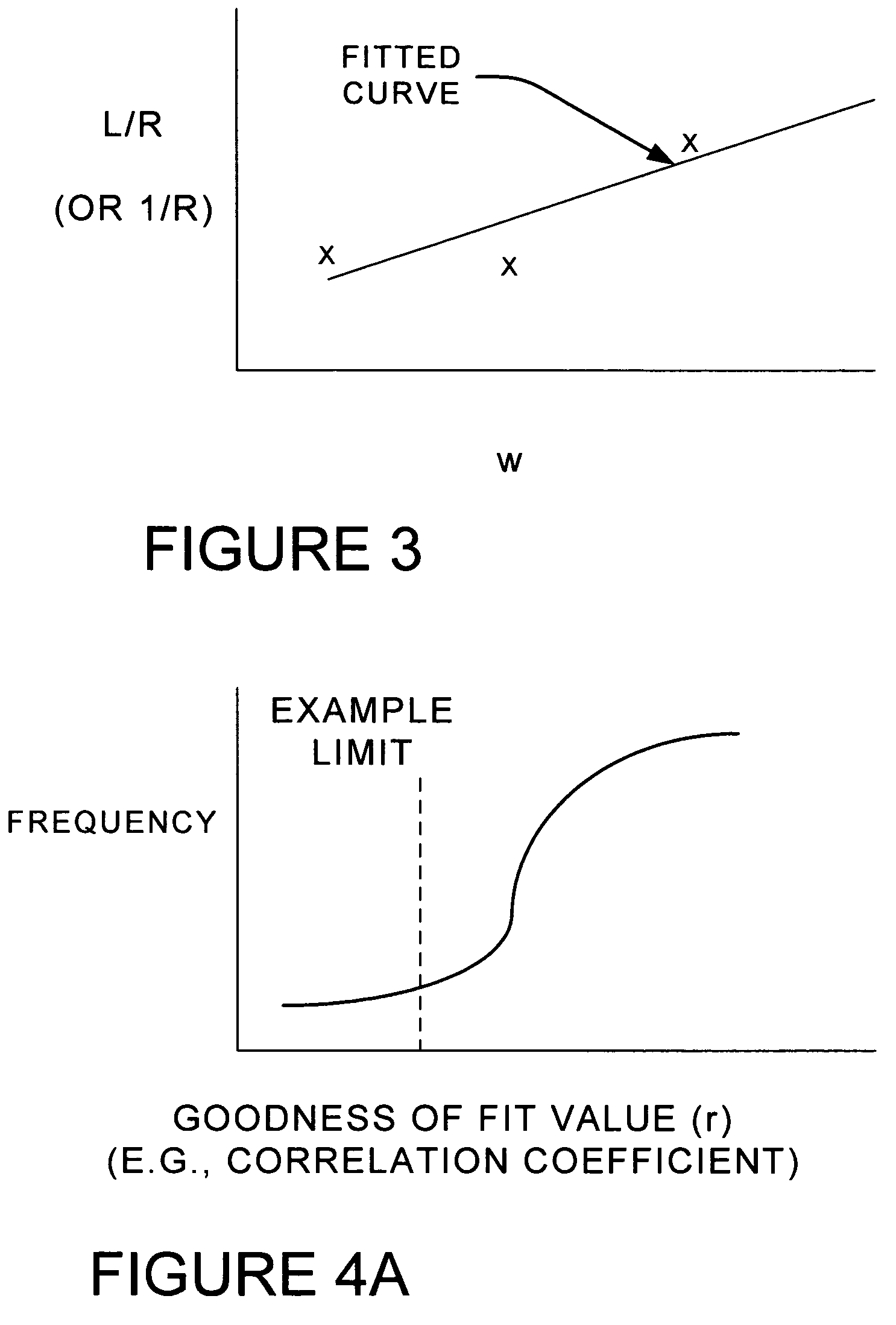Method for detecting and monitoring defects
a technology of defect detection and monitoring method, applied in the field of statistical process control method, can solve the problems of low level defects, devices ultimately formed with the interconnects that fall outside the tolerance range will be defective, and the resistance measurement is generally not sensitive enough to detect small defects
- Summary
- Abstract
- Description
- Claims
- Application Information
AI Technical Summary
Benefits of technology
Problems solved by technology
Method used
Image
Examples
examples
[0089]The following non-limiting examples represent preferred forms and best modes contemplated by the inventor for practice of his invention, as well as illustrating the results obtained through its use.
[0090]A. Resistance Test—
[0091]Below is an example of an embodiment of the invention simulated for a resistance measurement of test structure on a integrated circuit. The simulation is for 30 long lines, divided into 30 individual segments of 1 μm.
[0092]The electrical resistance of a line or wire is well known to be:
R=ρ(L / A) (1)
where:[0093]ρ is the resistivity[0094]L is the resistor / conductor length[0095]A is the cross-sectional area
For a rectangular cross-section,
A=W*T (2)
with:[0096]A=area[0097]W being the resistor width[0098]T being the height or thickness
In the case of a thin film, the resistance equation is often expressed as:
R=Rs(L / W) (3)
with[0099]R is resistance[0100]Rs, known as sheet resistance, then defined as:
Rs=ρ / T (4)
and the ratio of length to width, L / W, is often re...
PUM
 Login to View More
Login to View More Abstract
Description
Claims
Application Information
 Login to View More
Login to View More - R&D
- Intellectual Property
- Life Sciences
- Materials
- Tech Scout
- Unparalleled Data Quality
- Higher Quality Content
- 60% Fewer Hallucinations
Browse by: Latest US Patents, China's latest patents, Technical Efficacy Thesaurus, Application Domain, Technology Topic, Popular Technical Reports.
© 2025 PatSnap. All rights reserved.Legal|Privacy policy|Modern Slavery Act Transparency Statement|Sitemap|About US| Contact US: help@patsnap.com



